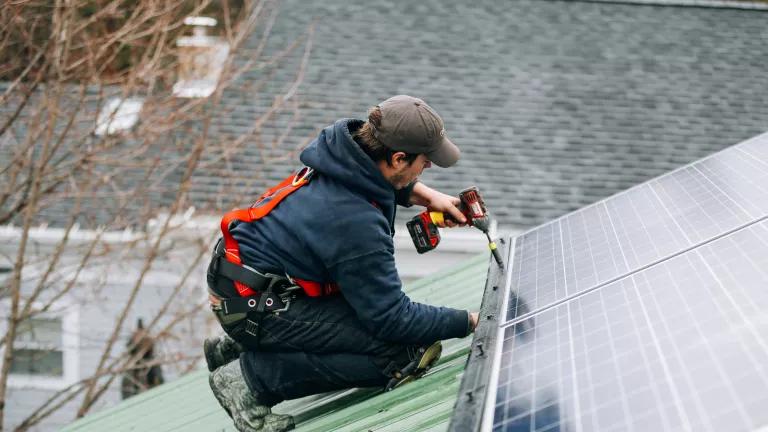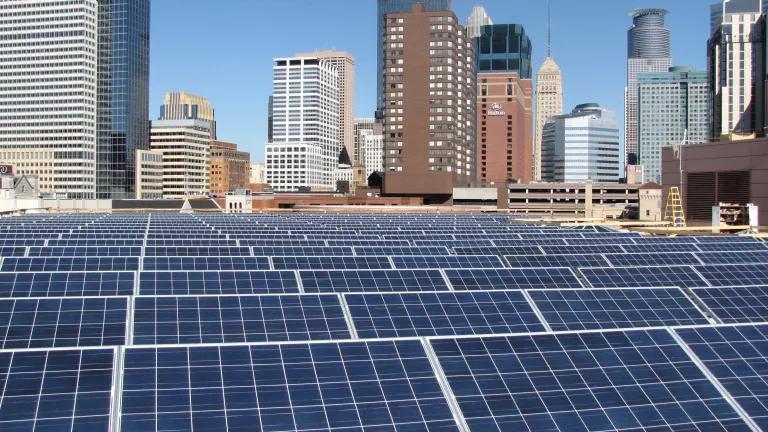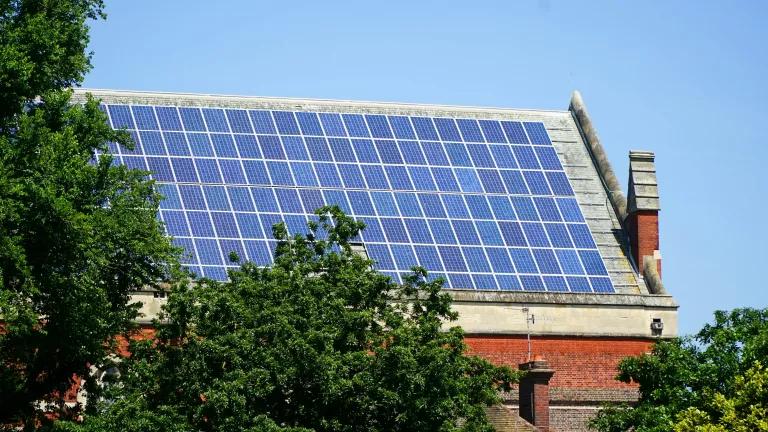Cities Are Critical to Deliver Equity Goals in Climate Bill
The new climate law requires a central role for cities to realize equitable outcomes.

Millennium Park in Chicago, Illinois
Hundreds of cities across the U.S. have set climate goals, which are now closer in reach thanks to the landmark Inflation Reduction Act, which promises to be the most significant piece of climate legislation ever signed by a president. This $369 billion investment (the “climate bill”) will transform the power sector, resulting in a 150% increase in solar and wind power generation, about 190,000 new jobs, and an 8% cut in energy bills by 2030. The climate bill contains programs to seed new green banks, make electric cars and home and commercial energy upgrades more affordable, and a historic investment of approximately $60 billion in environmental justice provisions. When combined with last year’s $1.2 trillion infrastructure law, we have more national resources than ever to make long-lasting, transformative change.
Cities are the hub of the wheel
What makes cities critical to pursuing equity? Cities are where people access daily amenities and basics of living such as transportation, housing, energy, and water; all of which have climate consequences and importantly affect quality of life, public health, affordability, and access to opportunity. The climate bill’s new consumer incentives may not generate equitable outcomes unless cities play a leading role in their implementation.
Cities often hold authority in important business/industry sectors, and local laws can be barriers or enablers to implementing climate policies and creating more equitable access. NRDC worked, as part of Bloomberg Philanthropy’s American Cities Climate Challenge (ACCC), to demonstrate that 25 committed cities can reach and exceed the Paris climate agreement goals. They are implementing key policies, such as land use measures for building new energy-efficient and affordable housing, mapping new EV charging infrastructure, and passing EV and solar readiness ordinances to include low-cost wiring in future charging spaces and roofs on new housing developments. Cities will play a critical role in implementing the climate bill and will be instrumental in realizing President Biden’s vision of Justice 40, which calls for a whole-of-government approach to delivering 40% of the benefits from certain federal climate initiatives to disadvantaged communities.
So how will this funding work in practice?
Compared to last fall’s infrastructure bill in which mostly formula funds flow directly to state governments, the climate bill presents unprecedented grant opportunities to supercharge city-based action. As a result, cities will be the crux in more equitable climate bill implementation.
- Cities receive prime federal funds and are eligible for more funding than communities.
- Cities direct where infrastructure is located, including establishing or remedying historical inequities, and many are actively overcoming barriers. To maximize this generational opportunity, it will be critical for local governments to partner with community-based organizations to position themselves for new funding, and design programs that leverage funds from both the infrastructure and climate bills.
- Cities—working with community-based partners—bring local knowledge to conversations about bridging gaps so frontline communities can better access state and federal funds.
Cities are leading in overcoming inequitable access to clean energy investments by anchoring community solar projects to enable participation by low-income residents and renters, creating tax incentives for building owners to upgrade and maintain affordability of naturally occurring affordable housing, creating accessible EV car share programs, and fostering local green banks that unlock access to financing tools for the capital investments need to realize building energy savings. Cities can play a key role with state transportation and energy offices designing programs that overcome barriers to better reach underserved populations.
Wheels of local wealth creation
Building efficiency and solar upgrades can generate good paying local jobs, and the bill’s domestic manufacturing and fair wages provisions ensure growth in new, high-quality industrial and manufacturing job opportunities. Cities are critical to building a new workforce, leveraging existing job training programs, and tapping new funds such as the current Department of Energy funding for Workforce Partnerships. Some cities are forging metro region workforce partnerships, pooling funds with neighboring cities and counties to recruit underrepresented populations, such as women, BIPOC, and formerly incarcerated populations into training for the rapidly growing clean energy job sectors. Cities can also implement inclusive procurement practices to open doors for underrepresented populations in government contracting services as one of the many ways to build local economic prosperity around the infusion of federal investment in the clean energy economy in this climate bill.
Not reinventing the wheel
So, where do cities start? First, they should not, and need not, go it alone. As one example, they could invite federal, regional, local and community-based organizational leaders to jointly discuss shared plans and scan the landscape of federal funding opportunities, as Orlando did. A number of handy online tools for searching for federal funding resources are available, like here and here.
Cities should start mapping out key partnerships, especially seeking to start or continue engaging community-based organizations in frontline and disadvantaged communities.
Cities should use data to engage with the community. Local equity data can enrich federal tools that set the definition of disadvantaged communities for federal funding such as new tools like Council on Environmental Quality’s recently released Climate and Economic Justice Screening Tool (CEJST) or DOE’s Energy Justice Dashboard.
Implementing Justice 40 will rely on grant applicants, such as cities, to set equity goals and demonstrate results. There may never be a better time to open up conversations toward community-led visions for an affordable and just clean energy future.



